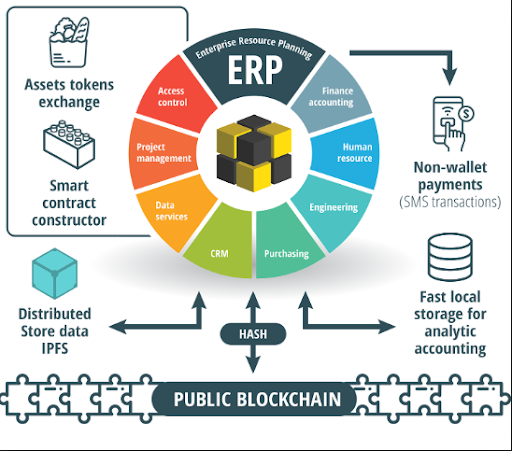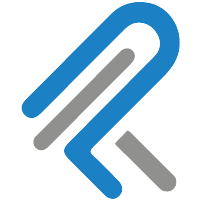Blockchain can influence our daily lives, so it becomes important that it can connect to various business application systems like enterprise resource planning (ERP), customer relationship management (CRM), warehouse management system (WMS), manufacturing execution systems (MES), etc. Only then can it change the thought client to attain business success through blockchain.
As these systems build, track, purchase, and ship products, integrating with blockchain will provide a copy of this information into the network which is immutable and indelible and can be tracked and used for reference at any time, for any purpose.
As the ERP systems generate financial transactions, integrating with blockchain will help make these financial transactions transparent and reliable. Integration with ERP, WMS, and MES systems will reduce disputes over invoices, shipments, returns, and purchases.
The profit in the desegregation of ERP with blockchain is twofold. Firstly, it will bring transparency, and secondly, it can reduce the cost of tracking and reporting which is significant, considering multi-echelon and multi-staged supply chains.
The enterprise-ready blockchain capabilities ought to address the business processes and thus facilitate them getting into the blockchain network. Research and efforts have already begun to connect the ERP with the blockchain network.
Use Cases
Finlync’s distributed ledger division. It is considered the world’s first blockchain-agnostic integrator for ERP systems. Finlync has developed a seamless plug-and-play integration for SAP, Ethereum, and Hyperledger blockchains, and more to follow suit. Skye, a Norway-based company, has more versatile products to offer. It has developed integrations of SAP with different blockchains giving integration services in finance, HR, and supply chain.
There are three main potential growth areas in the supply chain domain. First is the advent of middleware technologies which can connect the ERP systems with different blockchain networks, second is the identification and development of use cases in the supply chain that might have the benefit of the blockchain network, and third is the blockchain as a service (BaaS).
There are already some companies that have developed middleware and are further improving on it. Let’s take the case of Microsoft’s Project Bletchley. This is an open supply framework to permits the integration of blockchain networks with several applications. It focuses on security and governance requirements and, therefore, includes features such as a gateway or identity, key, and crypto services to allow non-blockchain clients to communicate with the blockchain network. Interledger is a lightweight blockchain protocol and integration framework to connect different blockchains and other interfaces, such as banks, PayPal, or Skype. Even established middleware vendors like Software AG or TIBCO Software are helping integrate and correlate blockchain events with the rest of the enterprise’s design.
Another use case in the supply chain is that procurement information like purchase orders (PO) and purchase agreements, which are held in the ERP system, can be registered in digital formats in a blockchain. These digital assets can be available only to members with private keys and can be referred, thus removing the need for physical movement through email, mail, or fax. It will be completely transparent and public with sensitive information being accessed only by members with private keys.
Blockchain with enterprise resource planning (ERP) and blockchain as a service (BaaS) are areas that are developing very rapidly and are opening up big opportunities. It will simply be concluded that tons of analysis has already been done on the blockchain with versatile applications. However, the field is still wide open. The development of blockchain from the Bitcoin network is examined with a detailed study of protocols for validation and address hashing in a distributed network with publicly available information, thus making the information unhackable, which is the linchpin of transparency and authenticity.

With roll up sleeves, dive in and get the job done approach, it was in the year 2010 when Sahil started Parangat Technologies. Emphasizing a healthy work culture and technology-driven company, he has successfully created a workplace where people love to work and live. He is a software engineer and a passionate blockchain enthusiast.


 +44-7511-112566
+44-7511-112566 +353-1-8079571
+353-1-8079571 +1-415-799-9792
+1-415-799-9792

